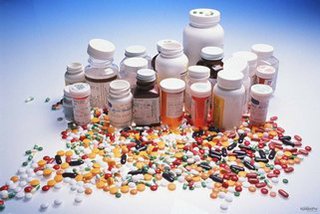Why does blood thicken after COVID-19 and how to avoid it? Doctors explain
Thrombosis is one of the frequent consequences of covid-19 , it is observed in about every third person who has had a "corona". Therefore, anticoagulants are often included in the treatment protocol for such patients. How to take them correctly and what to do to reduce the risk of thrombophlebitis? Doctors give advice.
Who is at risk for thrombosis?- Thrombogenesis is a protective mechanism, - Professor Evgeny Roytman, President of the National Association for Thrombosis and Hemostasis, introduces the matter. - In most cases, it should protect us from bleeding, for example, in case of injury. However, under a number of pathological conditions, this mechanism does not work there and not when it is needed - and this becomes a disaster. If a blood clot blocks the lumen of a vessel, blood flow slows down or stops, body tissues do not receive oxygen and nutrients, and their necrosis begins. An even more acute situation occurs when a blood clot breaks off from the vessel wall and enters the heart, lung, and brain with the bloodstream. This can lead to myocardial infarction, kidney, lung, stroke, pulmonary embolism, leg vein thrombosis, and even death. As it turned out, microthrombosis can occur with COVID-19,
The fact is that one of the favorable environments for the reproduction of the SARS-CoV-2 virus is the endothelium lining the inner surface of the blood vessels, which is in contact with the blood. Normally, they are very elastic and the blood moves through them freely. When endothelial cells are attacked by a virus, the inner lining of blood vessels loses its elasticity, making it difficult for blood to flow. In this case, the person will not even feel that he is developing a blood clot.
One of the most important conditions for the fight against thrombosis is risk modification. In the area of their action are patients with oncological, cardiovascular diseases who have undergone surgical interventions. Among the ways to prevent risks, drug therapy remains the key.
- There are several groups of anticoagulant drugs, this is a large range, and the DOCTOR always faces a choice of what exactly to prescribe to a particular patient. It is important to follow clinical recommendations and at the same time take into account the individual characteristics of a particular patient - his history, age, comorbidities, - said the chief freelance specialist of the Ministry of HEALTH of RUSSIA for clinical laboratory diagnostics, HEAD of the department of laboratory medicine and genetics of the National Medical Research Center. Almazova of the Ministry of Health of Russia, Professor Tatyana Vavilova.
Eliminate risk factorsDrugs that are even in the same pharmacological group do not replace each other and require careful use. Even over-the-counter drugs that are recommended for the risk of thrombosis (for example, aspirin) must be used as prescribed by a doctor and under his supervision, otherwise complications are not excluded.
- Patients with gastric ulcers are advised to undergo a gastroscopy before prescribing a drug that can provoke bleeding. But the clinical guidelines do not provide for the performance of gastroscopy for all patients. Meanwhile, up to 10-15% of patients have a stomach ulcer in a latent form, - said Albert Galyavich, chief freelance cardiologist of the Volga Federal District, head of the cardiology department of the Interregional Clinical Diagnostic Center.
Much in successful therapy depends on the patient, doctors emphasize. Risk factors for thrombosis, such as smoking, lack of exercise, unhealthy diet, excessive ALCOHOL consumption, obesity, stress, can only be influenced by a person. For example, Professor Alla Shabalina, a leading researcher at the Moscow Scientific Center for Neurology, considers smoking to be one of the key risk factors that can be completely eliminated.
- We conducted a study to find out how cigarettes affect the process of hemostasis. Those who smoke 20 or more of them a day have much worse rates compared to moderate smokers. They have increased blood viscosity, increased platelet aggregation, that is, the risk of thrombosis and cerebrovascular pathology, including acute stroke, is much higher, - said Alla Shabalina.
Evgeny Roitman notes that the trend towards a decrease in the number of smokers has stopped. Those who could and wanted to quit smoking did so, but people with persistent addiction continue. And there are many.
“Tobacco combustion products are first of all passed by a heavy tank through the vascular endothelium, they contribute to hypercoagulation, not to mention the carcinogenic effect,” said Evgeny Roitman. - When a patient is unable to quit cigarettes immediately, it makes sense to discuss an alternative smoking harm reduction model.
A sedentary lifestyle is also an important risk factor for thrombosis. The trigger can be, for example, long journeys and flights. At risk are pilots, truckers and office workers. Although the protection measures here are the simplest - drink enough plain water and warm up regularly. Even the use of compression stockings, not only during rehabilitation after a surgical operation, but also, for example, during a long flight, significantly reduces the risk of a blood clot, the expert noted.





























































